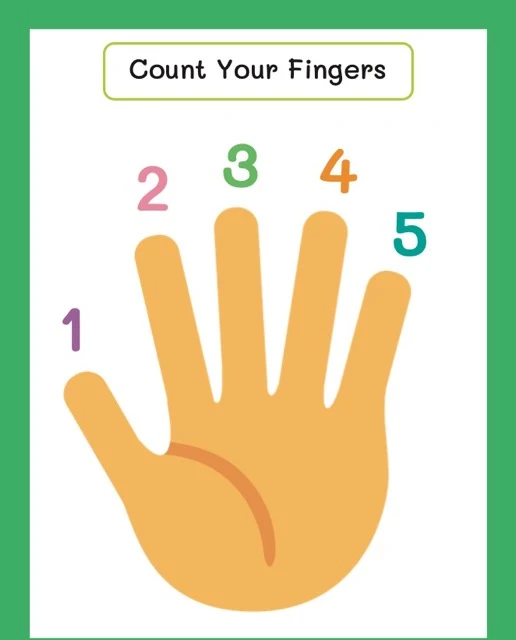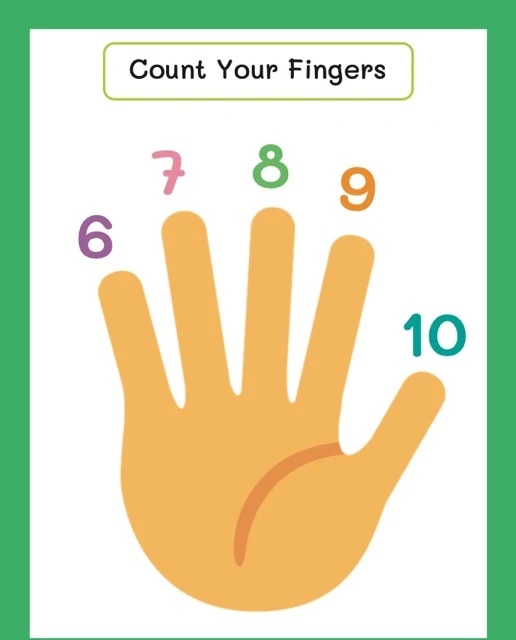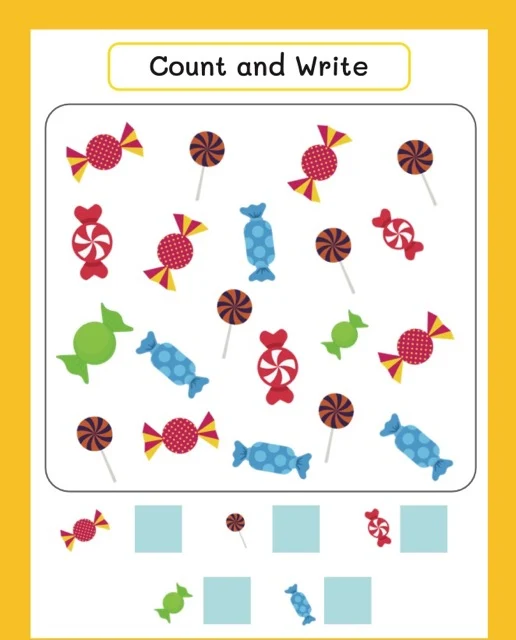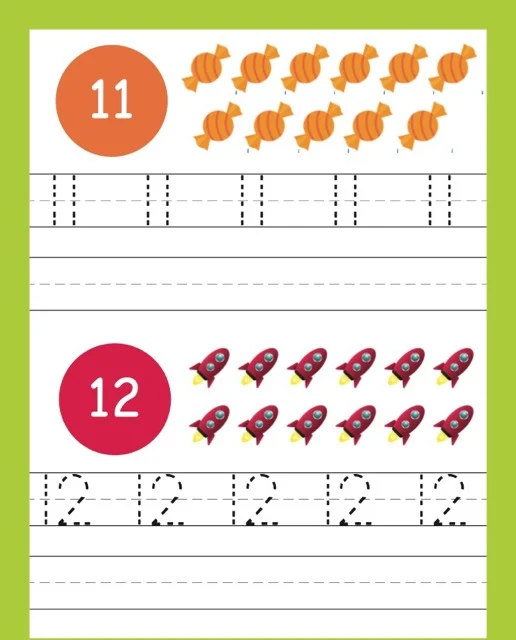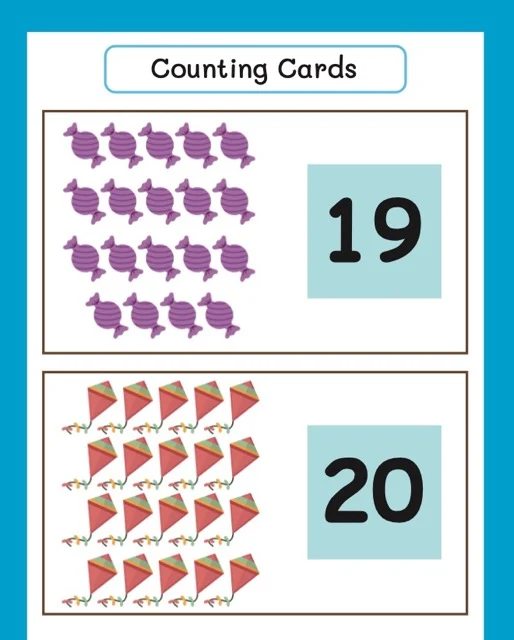Developing Early Childhood Counting Skills
This briefing document synthesizes information from three sources on developing early childhood counting skills. Key counting principles like cardinality and one-to-one correspondence are explained, along with effective teaching strategies such as using manipulatives and games. The document also addresses supporting children with learning difficulties and highlights the long-term benefits of strong early counting skills for mathematical development and future academic success. The overall message emphasizes the importance of fostering a positive learning environment to build a solid foundation in numeracy.
Developing Early Childhood Counting Skills
Briefing Document: Developing Early Childhood Counting Skills
Introduction: This briefing document reviews key themes and important facts about developing counting skills in early childhood based on the provided sources: "Developing Early Childhood Counting Skills," "Teaching Children to Count," and "Testing Theme: Counting.pdf". The document highlights crucial counting principles, effective teaching strategies, signs of learning difficulties, and the long-term benefits of early counting skills.
Core Counting Principles:
●
Cardinality: This principle refers to understanding that the last number counted in a set represents the total number of items. "Cardinality is the understanding that the last number counted in a set represents the total quantity of items in that set. This is a fundamental principle of counting as it helps children grasp the concept of 'how many' are in a group." (Developing Early Childhood Counting Skills)
●
One-to-One Correspondence: Assigning a single number word to each object during counting is essential for accuracy. "One-to-one correspondence is the ability to assign one and only one number word to each object being counted. Without this skill, children might skip objects or count an object multiple times, leading to inaccurate counting." (Teaching Children to Count)
●
Stable Order: Children need to learn the consistent sequence of numbers (1, 2, 3...).
●
Order Irrelevance: The order in which objects are counted doesn't change the total quantity.
●
Abstraction: The ability to count anything, regardless of its physical characteristics, is crucial for applying counting skills in various contexts.
Effective Teaching Strategies:
The sources provide a variety of engaging activities to develop counting skills:
●
Finger Counting: Using fingers provides a concrete visual representation of numbers.
●
Counting Objects: Counting everyday objects helps children practice one-to-one correspondence.
●
Matching Exercises: Matching quantities to numerals solidifies the link between number symbols and their values.
●
Counting Cards: As "Testing Theme: Counting.pdf" visually demonstrates, counting cards can introduce number recognition, counting sequences, one-to-one correspondence, and basic number relationships.
●
Games: Dice, spinners, and card games can make learning fun and engaging.
●
Real-Life Scenarios: Applying counting in everyday routines like setting the table increases the relevance and meaning for children.
●
Songs and Rhymes: Music and rhythm enhance memory and enjoyment in learning.
●
Manipulatives: Blocks, beads, and counters provide hands-on experiences to represent quantities physically.
●
Sensory Activities: Integrating textures, colors, and sounds can further stimulate engagement and learning.
Supporting Children with Difficulties:
●
Patience and Encouragement: Creating a positive and supportive learning environment is crucial for building confidence and motivation.
●
Concept Breakdown: Start with smaller numbers and gradually increase complexity.
●
Visual Aids: Manipulatives, number lines, and counting cards help visualize quantities and number relationships.
●
Counting Games: Engaging games can make practice more enjoyable and less daunting.
●
Teacher Consultation: Collaboration with the child's teacher ensures consistent strategies and support.
Benefits of Counting Skills:
Early counting skills provide a foundation for:
●
Advanced Mathematical Concepts: Addition, subtraction, multiplication, and division build upon basic counting principles.
●
Number Sense: A strong understanding of numbers, their values, and relationships.
●
Problem-Solving Abilities: Counting skills contribute to logical thinking and numerical reasoning.
●
Future Academic Success: Early numeracy skills are linked to success in later math studies.
●
Real-World Application: Counting skills are essential for everyday tasks and decision-making.
Conclusion:
Developing counting skills in early childhood is crucial for future mathematical understanding and overall development. Employing diverse teaching strategies, understanding core counting principles, and recognizing signs of difficulty are essential for supporting young learners. By fostering a positive learning environment and integrating counting into engaging activities, we can ensure children have a strong foundation for future success in math and beyond.
Teaching Children to Count
Counting Activities FAQ
1. What are some effective ways to teach children counting skills?
Several hands-on activities can help children learn to count. These include:
●
Finger Counting: Using fingers is a natural and accessible way for children to visualize and represent numbers.
●
Matching Exercises: Matching quantities to numbers helps children associate numerals with their corresponding values.
●
Counting Objects: Having children count everyday items like toys or blocks develops their one-to-one correspondence skills, ensuring each object is counted only once.
●
Number Recognition Activities: Activities like identifying missing numbers in a sequence or matching number cards to quantities reinforce number recognition and sequencing.
2. What is the purpose of counting cards in early math education?
Counting cards are versatile tools for teaching various counting concepts. They can be used to:
●
Introduce Number Recognition: The visual representation of the numeral alongside a corresponding quantity helps children learn number symbols.
●
Practice Counting Sequences: Cards arranged in numerical order support learning number sequences and understanding the order of numbers.
●
Develop One-to-One Correspondence: Children learn to match each object on the card to a single count.
●
Introduce Number Relationships: Activities involving comparing quantities on different cards ("more than," "less than") help introduce basic number relationships.
3. How do matching exercises contribute to counting skills development?
Matching exercises are crucial for solidifying the connection between a numerical value and its corresponding quantity. This connection is fundamental to understanding number concepts. When children match, for example, three dots to the numeral "3", they are reinforcing the idea that "3" represents a set of three items.
4. Why is one-to-one correspondence important in learning to count?
One-to-one correspondence is the ability to assign one and only one number word to each object being counted. Without this skill, children might skip objects or count an object multiple times, leading to inaccurate counting. Activities like counting objects while touching each one or moving objects from one container to another while counting reinforce this skill.
5. How can I make counting practice more engaging for young children?
To make counting enjoyable, try these approaches:
●
Incorporate Games: Play counting games using dice, spinners, or cards.
●
Use Real-Life Scenarios: Count objects in daily routines like setting the table or sorting laundry.
●
Sing Counting Songs and Rhymes: Music and rhythm make learning fun and memorable.
●
Use Manipulatives: Provide objects like blocks, beads, or counters for hands-on exploration.
●
Make it Sensory: Incorporate textures, colors, and sounds into counting activities.
6. What are some signs that a child might be struggling with counting?
If a child consistently:
●
Skips numbers in the counting sequence.
●
Has difficulty counting objects accurately, even small quantities.
●
Doesn't seem to grasp the concept of one-to-one correspondence.
●
Shows frustration or disinterest in counting activities, it could indicate they need additional support in this area.
7. How can I support a child who is having difficulty with counting?
●
Be Patient and Encouraging: Learning to count takes time and practice. Provide positive reinforcement and praise their efforts.
●
Break Down Concepts: Focus on smaller numbers and gradually increase the complexity.
●
Provide Visual Aids: Use manipulatives, number lines, or counting cards to help visualize the quantities.
●
Play Counting Games: Make learning fun and engaging through games and activities.
●
Consult with their Teacher: Discuss your concerns with their teacher to coordinate strategies and support.
8. How does learning to count prepare children for more advanced math concepts?
Counting is the foundational building block for more complex mathematical skills. It forms the basis for:
●
Number Sense: Understanding the relative value of numbers.
●
Addition and Subtraction: The ability to combine and separate quantities.
●
Multiplication and Division: Understanding groups of equal quantities.
●
Problem-solving: Using numerical information to solve real-life problems.
Developing Early Childhood Counting Skills
Counting Skills Development in Early Childhood Education
Study Guide
Understanding Counting Principles:
●
Cardinality: The understanding that the last number counted in a set represents the total quantity of items in that set.
●
One-to-One Correspondence: The ability to assign one and only one number word to each object while counting.
●
Stable Order: Counting consistently in the same sequence (1, 2, 3...).
●
Order Irrelevance: Recognizing that the order in which objects are counted does not affect the total quantity.
●
Abstraction: The ability to count anything, regardless of its physical characteristics.
Effective Counting Activities:
●
Finger Counting: Using fingers to visualize and represent numbers.
●
Counting Objects: Counting everyday objects to develop one-to-one correspondence.
●
Matching Exercises: Associating quantities to numbers.
●
Number Recognition Activities: Identifying and sequencing numbers.
●
Counting Cards: Introducing number recognition, counting sequences, and number relationships.
●
Games: Dice, spinners, or card games incorporating counting.
●
Real-Life Scenarios: Counting objects in everyday activities.
●
Songs and Rhymes: Music and rhythm for learning counting.
●
Manipulatives: Hands-on counting with blocks, beads, or counters.
●
Sensory Activities: Integrating textures, colors, and sounds into counting.
Supporting Children Struggling with Counting:
●
Patience and Encouragement: Provide positive reinforcement.
●
Concept Breakdown: Focus on smaller numbers and gradually increase complexity.
●
Visual Aids: Use manipulatives, number lines, or counting cards.
●
Counting Games: Make learning fun and engaging.
●
Teacher Consultation: Discuss concerns with the teacher to coordinate strategies.
Benefits of Counting Skills:
●
Foundation for advanced math concepts (addition, subtraction, multiplication, division).
●
Development of number sense.
●
Enhanced problem-solving abilities.
Quiz
Instructions: Answer the following questions in 2-3 sentences.
1.
Explain the concept of one-to-one correspondence and why it is crucial in learning to count.
2.
Describe two effective ways to use counting cards in early math education.
3.
How can matching exercises contribute to a child's understanding of number concepts?
4.
List three signs that a child might be struggling with counting.
5.
Suggest two strategies for making counting practice more engaging for young children.
6.
What is the significance of incorporating real-life scenarios into counting activities?
7.
Explain the concept of cardinality and its role in counting.
8.
How do counting skills prepare children for more complex mathematical operations?
9.
Why is it essential to be patient and encouraging when supporting a child learning to count?
10.
Describe two types of visual aids that can be beneficial for children who are having difficulty with counting.
Quiz Answer Key
1.
One-to-one correspondence is the ability to assign a single number word to each object being counted, ensuring that each object is counted only once. This is crucial because it prevents skipping or double-counting objects, leading to accurate counting.
2.
Counting cards can be used to introduce number recognition by visually pairing numerals with corresponding quantities. They can also be used to practice counting sequences by arranging the cards in numerical order.
3.
Matching exercises help children solidify the connection between a numerical value and its corresponding quantity. By matching, for example, three dots to the numeral "3," they reinforce the idea that "3" represents a set of three items.
4.
Signs a child might struggle with counting include: skipping numbers in the counting sequence, difficulty accurately counting even small quantities, and not grasping one-to-one correspondence.
5.
To make counting practice more engaging, incorporate games using dice or spinners that involve counting. Another strategy is to use real-life scenarios, such as counting objects while setting the table or sorting laundry.
6.
Incorporating real-life scenarios makes counting more meaningful and relatable for children. It helps them understand the practical applications of counting in their everyday lives and increases their motivation to learn.
7.
Cardinality is the understanding that the last number counted in a set represents the total quantity of items in that set. This is a fundamental principle of counting as it helps children grasp the concept of "how many" are in a group.
8.
Counting skills form the foundation for more complex mathematical operations like addition, subtraction, multiplication, and division. By understanding counting, children develop the ability to combine, separate, and manipulate quantities, which are essential for higher-level math.
9.
Patience and encouragement are essential because learning to count takes time and practice. Positive reinforcement builds a child's confidence and motivation, fostering a positive learning experience and promoting a willingness to continue practicing.
10.
Manipulatives, like blocks or counters, provide hands-on experiences for children to physically represent quantities and practice counting. Number lines are another beneficial visual aid that can help children visualize the order of numbers and understand number relationships.
Essay Questions
1.
Discuss the importance of play-based learning in developing counting skills in early childhood. Provide specific examples of play-based activities that can effectively promote counting skills.
2.
Explain the role of a teacher in supporting children's counting skills development. Describe various strategies a teacher can employ to cater to different learning styles and needs.
3.
Analyze the connection between counting skills and the development of number sense. How does a strong foundation in counting contribute to a child's overall mathematical understanding?
4.
Compare and contrast different types of counting activities, such as finger counting, counting objects, and using counting cards. Evaluate the strengths and limitations of each approach.
5.
Discuss the long-term benefits of developing strong counting skills in early childhood. How do these early skills impact future academic success and real-world application of mathematical concepts?
Glossary of Key Terms
Abstraction: The ability to count anything, regardless of its physical characteristics.Cardinality: The understanding that the last number counted in a set represents the total quantity of items in that set.Matching Exercises: Activities where children pair quantities with corresponding numerals to reinforce number recognition and understanding.Manipulatives: Physical objects like blocks, beads, or counters used to represent and manipulate quantities in hands-on counting activities.Number Recognition: The ability to identify and name numerals.Number Sense: An intuitive understanding of numbers, their values, and relationships.One-to-One Correspondence: Assigning one and only one number word to each object being counted, ensuring each object is counted only once.Stable Order: Counting in a consistent sequence (1, 2, 3...).Order Irrelevance: Recognizing that the order in which objects are counted does not affect the total quantity.